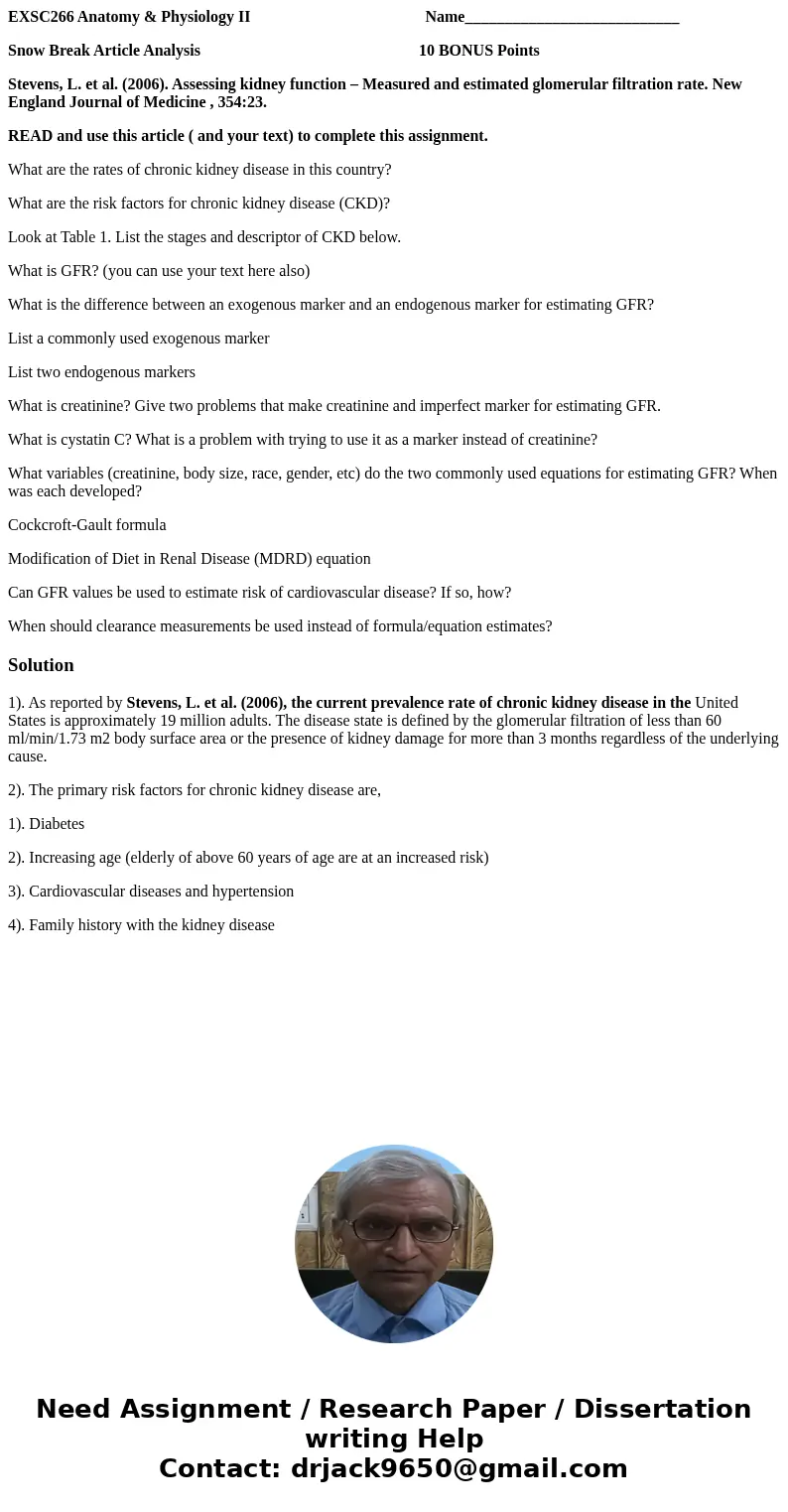EXSC266 Anatomy Physiology II Name Snow Break Article Analy
EXSC266 Anatomy & Physiology II Name___________________________
Snow Break Article Analysis 10 BONUS Points
Stevens, L. et al. (2006). Assessing kidney function – Measured and estimated glomerular filtration rate. New England Journal of Medicine , 354:23.
READ and use this article ( and your text) to complete this assignment.
What are the rates of chronic kidney disease in this country?
What are the risk factors for chronic kidney disease (CKD)?
Look at Table 1. List the stages and descriptor of CKD below.
What is GFR? (you can use your text here also)
What is the difference between an exogenous marker and an endogenous marker for estimating GFR?
List a commonly used exogenous marker
List two endogenous markers
What is creatinine? Give two problems that make creatinine and imperfect marker for estimating GFR.
What is cystatin C? What is a problem with trying to use it as a marker instead of creatinine?
What variables (creatinine, body size, race, gender, etc) do the two commonly used equations for estimating GFR? When was each developed?
Cockcroft-Gault formula
Modification of Diet in Renal Disease (MDRD) equation
Can GFR values be used to estimate risk of cardiovascular disease? If so, how?
When should clearance measurements be used instead of formula/equation estimates?
Solution
1). As reported by Stevens, L. et al. (2006), the current prevalence rate of chronic kidney disease in the United States is approximately 19 million adults. The disease state is defined by the glomerular filtration of less than 60 ml/min/1.73 m2 body surface area or the presence of kidney damage for more than 3 months regardless of the underlying cause.
2). The primary risk factors for chronic kidney disease are,
1). Diabetes
2). Increasing age (elderly of above 60 years of age are at an increased risk)
3). Cardiovascular diseases and hypertension
4). Family history with the kidney disease

 Homework Sourse
Homework Sourse